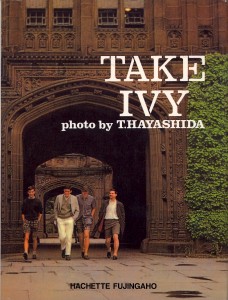 I originally penned this column several years ago as a meditation on the real roots of American preppy and what it means today. Well, just this week the iconic cult classic “Take Ivy” and long anticipated Preppy Handbook follow-up, “True Prep” were published and I thought now was a good time take a fresh look at the most American of styles: preppy.
I originally penned this column several years ago as a meditation on the real roots of American preppy and what it means today. Well, just this week the iconic cult classic “Take Ivy” and long anticipated Preppy Handbook follow-up, “True Prep” were published and I thought now was a good time take a fresh look at the most American of styles: preppy.
New England preparatory schools, conservative protestant values and social stratification collectively created an environment which produced the uniform we know today as the preppy look. Generations of social shifting, fashion trends and an intense resurgence of “back to classics” and “American heritage” styles have set the stage for American preppy mass marketing machine that is today’s trend spotter.
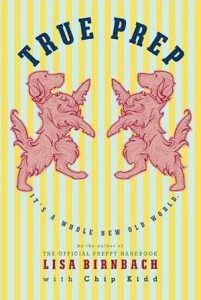 To be honest though, what passes today as “preppy” is for a most part a fantasized ideal of make-believe history. It is a manufactured past that distorts the classically rooted values which gave birth to the preppy culture.
To be honest though, what passes today as “preppy” is for a most part a fantasized ideal of make-believe history. It is a manufactured past that distorts the classically rooted values which gave birth to the preppy culture.
When a kid is called a “prep” today, it usually means that he wears rugby shirts and shops at Abercrombie & Fitch (I remember when A&F was, in fact a great store). There is no depth, no sense of history or understanding of the preppy culture. That’s too bad, because actually, it’s a pretty interesting history.
Yes, it started mostly at New England prep schools and ivy walled colleges. But the roots of preppy style can also be traced to a focus on social achievement, uniformity of style, propriety, proper decorum and class distinction. Conformity of dress at school resulted in the basic uniform of coat, tie, button down shirt, grey flannels or chinos and loafers or lace ups. Codes, traditions and sports also helped to nurture a bond and familiarity among budding preps and instilled in them a feeling of belonging.
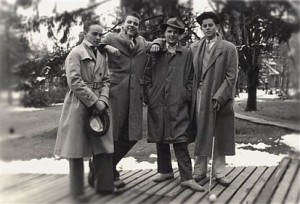 This environment helped create a culture of exclusivity that had real influence. To say you prepped at Phillips Exeter (a feeder school for Harvard) or Hotchkiss (a feeder school for Yale) could win you access to the right social circle or get you into really great parties. And once in the working world, to say you were a Yale man could mean getting the right job, joining the right club or vacationing on Martha’s Vineyard.
This environment helped create a culture of exclusivity that had real influence. To say you prepped at Phillips Exeter (a feeder school for Harvard) or Hotchkiss (a feeder school for Yale) could win you access to the right social circle or get you into really great parties. And once in the working world, to say you were a Yale man could mean getting the right job, joining the right club or vacationing on Martha’s Vineyard.
As preps sought to instill that sense of tradition and lifestyle in their own children, they looked, of course, to their own preppy past. To the oak paneled lecture halls of Exeter, the squash courts of Deerfield and the rowdy but stylish nights at Choate Rosemary Hall. So their offspring were trucked off to the old alma mater and the cycle began again. But, as with so many other attempts to create a bubble of exclusivity, the prep school aesthetic eventually moved beyond its original sphere of influence.
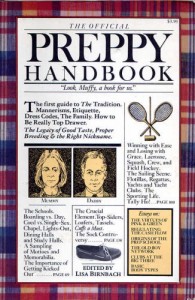 People want what they do not have or what seems more attractive than what they do. So, when the Preppy Handbook hit the shelves in 1980, its editor Lisa Birchach (herself a Brown grad) overnight became the arbiter of all things pink and green. People didn’t care that it was intended to be both a send-up of the “true” prep culture as well as a tongue and cheek education for those looking to emulate the life. They saw a way of living that was far more exciting, cultured, sporty and stylish than their own – and they wanted it.
People want what they do not have or what seems more attractive than what they do. So, when the Preppy Handbook hit the shelves in 1980, its editor Lisa Birchach (herself a Brown grad) overnight became the arbiter of all things pink and green. People didn’t care that it was intended to be both a send-up of the “true” prep culture as well as a tongue and cheek education for those looking to emulate the life. They saw a way of living that was far more exciting, cultured, sporty and stylish than their own – and they wanted it.
For the first time, preppy culture had been distilled into a portable and easy to understand resource.
The privileged and windswept lifestyle that had taken generations of Blue Bloods to develop and refine was now a commodity to be bought and imitated. I often use the term “democratization,” to describe this moment in the life of prep. That is because once the Preppy Handbook came out, kids across the world latched onto the most attractive aspect of the preppy life: its look, the rumpled and ironic blending of dress and casual clothes.
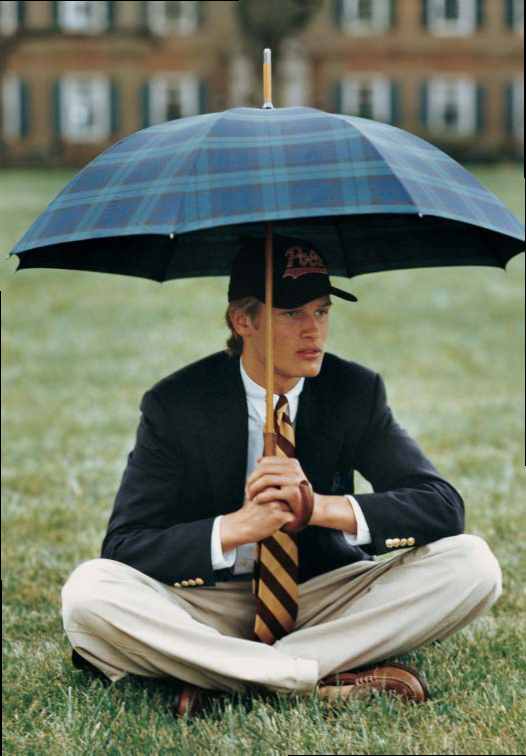 As one of my readers pointed out though, the iconic Ralph Lauren image of mixing dress and purposeful clothing did not start out as a fashion movement. “You don’t wear foul weather gear over your blazer because you’re a blue-blooded American demonstrating your accessibility without appearing tacky; you do it because you’re a wise-mouthed elitist who smugly tells your Latin professor, technically speaking, you haven’t broken any rules so there’s nothing he can do about it. And of course it’s sailing gear, because your father does own a yacht…”
As one of my readers pointed out though, the iconic Ralph Lauren image of mixing dress and purposeful clothing did not start out as a fashion movement. “You don’t wear foul weather gear over your blazer because you’re a blue-blooded American demonstrating your accessibility without appearing tacky; you do it because you’re a wise-mouthed elitist who smugly tells your Latin professor, technically speaking, you haven’t broken any rules so there’s nothing he can do about it. And of course it’s sailing gear, because your father does own a yacht…”
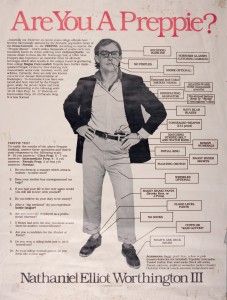 The original audience for this rebellious “foul weather gear over the blazer” look was other preppies and their families. Yet, as this type of hybrid style came into its own, it seeped out into regular society. Eventually spreading to Madison Avenue, it was popularized by style influencers like Ralph Lauren. The prep boom of the 1980s waned over time due, I think, to its extreme and vibrant interpretation of the preppy culture. There was an almost cartoonish quality to the movement. Broadly speaking, the current resurgence in preppy style has taken on a more worn, comfortable and “vintage” personality. It seems approachable and less stuffy.
The original audience for this rebellious “foul weather gear over the blazer” look was other preppies and their families. Yet, as this type of hybrid style came into its own, it seeped out into regular society. Eventually spreading to Madison Avenue, it was popularized by style influencers like Ralph Lauren. The prep boom of the 1980s waned over time due, I think, to its extreme and vibrant interpretation of the preppy culture. There was an almost cartoonish quality to the movement. Broadly speaking, the current resurgence in preppy style has taken on a more worn, comfortable and “vintage” personality. It seems approachable and less stuffy.
New brands burst on the scene and sent the preppy trend on a strong upward trajectory. First and foremost, J. Crew – led by Mickey Drexler and head menswear designer Frank Muytjens – literally reconstituted the entire genre. Jack Spade’s functionally cool bags and accessories gave the movement an urban tweak and legendary preppy brand L.L. Bean launched its own heritage label, “Signature.” Gant, the venerable Ivy League label founded in my home town of New Haven, is in the midst of a long due rebirth, in part due to the efforts of Michael Bastian, a classic prep devotee.
New players like Tucker Blair, with its vintage-modern needle point belts, and Kiel James Patrick, and his nautically inspired mens bracelets and braided belts, are the most obvious examples of the new face of modern prep. They join other former rebel brands which are now comfortably the establishment – Vineyard Vines for example – in redefining American preppy.
An interesting thing has happened to the breeding grounds of prepdom too. If you walk through Harvard Yard or Yale’s Old Campus, you don’t see too many of the snooty old-line preps anymore. They are still there of course, along with Skull & Bones and the legacy kids whose wealthy parents bought their admission. But what you really see is that a majority of the kids milling around campus these days more closely reflect the modern world. The prep thing is still very strong – stronger perhaps than in the 1980s – but it has been modernized and updated. Just like everything else in life.
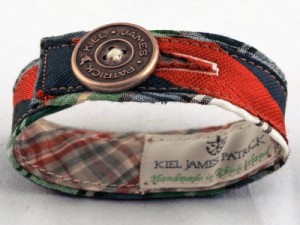
I remember well when the Lacoste shirts first appeared, the shirts were not sold in the US so the messege was clear, “I’ve been to France this summer and you have not”.
The other big reason for the downturn in preppy fashion towards the early 1990’s was simply that those who wanted the look no longer knew what the look actually was. While they were purchasing glossy Madison Avenue interpretations that required changes every season simply to move product,in actuality they were seasonally drifting further from the thing they were after.
I’m sure that Hotchkiss grads appreciate the upgrade you gave them, but with even a passing familiarity with NE Prep Schools (the only prep schools), one knows the preferred Yale feeder has always been Andover.
@ PA: “His name was George something, don’t even remember, and he went to Andover. Big, big deal.” When I think of Andover, I think of Holden and J. D. Salinger.
Thanks for all the great comments guys. I’ve been on the road over the past few days, up in CT, in fact. PA – regarding your affinity for Andover, I said that Hotchkiss is “a” feeder for Yale, not “the”feeder for Yale.
I do indeed have a passing familiarity with NE prep schools; my mother’s family has a very long relationship with Phillips Academy. My father is an alumnus of Hotchkiss. While the NE constellation of prep schools is certainly the most storied, there are many across the country that produce a regular crop of outstanding graduates with a genuine love for the preppy lifestyle and philosophy.
As a product of the lifestyle which both books both celebrate and send up in equal measure let me point out that our number one rule was always to be polite and low key. With that in mind, I am very happy that you are a proud Andover and Yale grad – boola, boola.
True Prep was a truly repulsive book that exists merely to promote the brands Lisa Birnbach was compensated by.
Was there a specific New England prep school district/association that came up with the uniform for all of their schools, or did one school decide on this uniform and other schools copied?
The style is simply the tribal dress of the Anglo-American gentry (North & South). These old families are of English (or if you are from NY or SC possibly Dutch or Huguenot) extraction and so dress in a comfortable English aristocratic manner passed down from their parents. It is a tribal style that one is either born to or not. If one is not born to it but you genuinely admire the Anglo-American gentry, their culture and traditions by all means adopt the culture including the clothing. If you are not actually an admirer or upper end British and Anglo-American culture and tradition you risk coming off as a fake, however, so don’t look at it a merely a fashion but an outward indicator of a certain type of pedigree (distinguished) and way of life.
YALE, USC – who gives a rat’s furry behind. A working class kid who could not AFFORD college but dreamed of ANDOVER or YALE & to be a member of the “W’s/ “Nuc You Lear” Club da SKULL & BONES but still likes reading stuff like Michael Korda’s AMERICAN ARISTOCRISY can, with élan, AT LEAST dress the part & pretend. We all cut the cheese thru our trou – Irish Kennedy, (whatever lineage they’re from) Rockefeller, Dutch Vanderbilt, Lansman, Goyem, or DuPont…
Do any dudes out there rock their LL Bean rubber mocs without sox as featured in the pic above? Just curious
Yes.
who wear them barefoot?